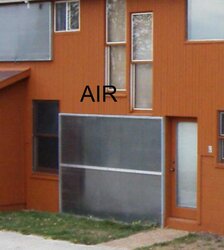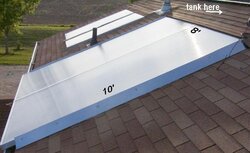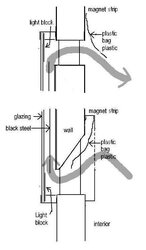This will be a helpful study. Thanks to Alliance for Green Heat for the link.
http://phys.org/news/2015-08-sun.html
http://phys.org/news/2015-08-sun.html
If I was sure I could keep the panels free of snow I could see myself interested in solar panels heating a tub of water that my hydronic baseboards are plumbed to. It would pay back faster than grid tying or batteries for me. In the summer the panels could heat regular water for showers.
required continuous owner attention and tolerance for discomfort, and was inefficient, rendering the collectors really large, expensive and a PITA.

With current building science and energy costs, its simply not the 1970s anymore, at least for new construction. With superinsulation and minisplits one can drive your heating (and cooling) bills way down (e.g. less than the cost of internet), and if one wants to be sustainable or low carbon, throw some cheap PV into the mix. Voila, a net-zero home exceeding the wildest dreams of those pioneers in the 70s.
My collectors need no pumps, fans, controls, electricity, monitoring or attention."quietly without an active solar thermal system

How many BTUs per year for HW and space heat?

if you want me to be impressed re space heat, you have to tell me BTUs/yr.
$400 for heat and hot water! Have you been reading my bills?heatig bill on those properties is only -$200/year, with a fossil or mini-split heat source, and DHW can be about $200/yr also with HPWH
That's correct. A lot of homes can't take advantage of solar heating due to siting, climate zone, etc.. This can be fully compensated for by a good thermal-break envelop, sealing and insulation. The home could be designed so that it is mostly heated by lighting, appliances and body heat. If some passive solar can be worked into this design the house will almost heat itself.The best low tech approach that I've seen is insulation. It isn't sexy or fun to talk about until the (lack of) heating bills come in.
Winters here are sunny at <0F, cloudy at 30F. That one windy sunny <0F day would have consumed the same fuel as five 30F days. Here they're starting to retroactively eliminate net metering, raise fixed fees and tax PV. $400 for heat and hot water! Have you been reading my bills?
Hmm. If you were airsealed, that 0F day should use ~2x the heat of the 30F day (based on HDDs), not 5x. If you are that sensitive to wind, then more than half of your heating bill can be eliminated by airsealing,

All houses are affected by wind.


